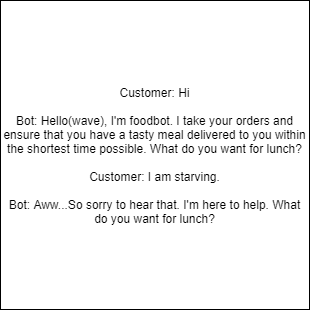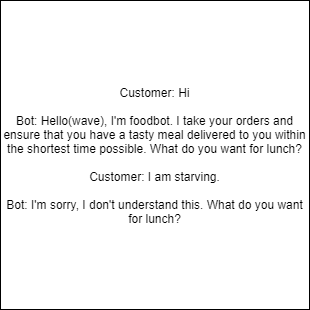
When implementing a chatbot solution for your business, there are several questions to consider. One of which is, what the best chatbot for your business: rule-based or conversational AI?. Rule-based chatbot and conversational AI chatbot both have distinct advantages. How can you fully understand the capabilities of each chatbot and choose the option that is best for your business?
AI Chatbot Vs. Rule-based Chatbot: What's the difference?
A rule-based chatbot follows a defined rule when interacting with customers. It anticipates likely questions and scenarios and then responds.
It does this by matching the words contained in a query to the appropriate response in its knowledge base. For a rule-based chatbot to be successful, it requires an extensive database so that the chatbot can handle more queries accurately. The downside is, no matter how extensive the database is, it is difficult to cater to every scenario. To provide the right response, the user’s question must match one of the variations of the questions contained in the knowledge base.
AI chatbot is similar to ‘intent match’ in search engines. Unlike rule-based chatbots, it doesn’t just match a query word for word. Questions do not need to conform to a set/strict pattern for the bot to respond. The same question can be phrased differently by various users and the bot will provide an answer. It does this by understanding the intent behind each query and matches it with the right response

A key feature of a Conversational AI chatbot
One important feature of a conversational AI chatbot is Intent recognition. Intent recognition is the ability of a chatbot to discern the purpose behind a customers’ statement or question. It works with the understanding that in human communication, there are several ways to communicate one idea.
A conversational AI chatbot analyzes select words contained in a sentence. This helps it to understand the entire sentence, and the action a user wants to complete. After this analysis, it provides a response based on its understanding of the task a user wants to complete.
Intent recognition differentiates AI chatbot from a rule-based chatbot. This feature gives it more flexibility, allowing it to respond to queries that might not match what is contained in its knowledge base word for word. For instance, a customer interacting with a gift shop bot might say “Hi. I am looking for the perfect birthday present for my 5-year-old daughter”. The bot reads the entire sentence and picks out the intents which are “birthday present”, “five years old” and “daughter”. It goes through the shop’s inventory and recommends the different birthday presents for a 5-year-old girl.
To understand intent recognition more, see a users’ exchange with a fictitious food ordering bot.

A

B
A is a conversational AI chatbot. Through intent recognition, it understands that “starving” connotes hunger and provides the appropriate response, urging the customer to order a meal. B is a rule-based chatbot. Because “starving” isn’t part of the rules it’s been trained to recognize, It fails to understand the customer’s request.
Which one is right for your business? Rule-based chatbot or AI chatbot?
There is no right or wrong chatbot for your business. Rather, what influences your choice is your business and the purpose of your bot.
The purpose of your chatbot determines what is best: rule-based or conversational AI. A rule-based chatbot is adept at handling straightforward and well-defined tasks that require minimal conversation. It can handle simple tasks like appointment booking.
But if you intend to include lots of functionalities in your chatbot and enable conversations with your brand, a conversational AI chatbot is advisable. Supported by intent recognition, it can understand the nuances in human communication, providing a richer conversation experience
Conclusion
No chatbot is better than the other. What is best for you is determined by your current needs, business size and goals. Depending on what they are, a rule-based chatbot or AI chatbot can help you meet these goals.
Are you eager to see how a chatbot works and the benefits it adds to your business? Request for a personalized demo now.

